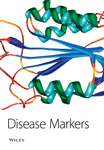Expression of MicroRNAs in the Urinary Sediment of Patients with IgA Nephropathy
Abstract
Background: Micro-RNAs (miRNAs) regulate one-third of all protein-coding genes and are fundamental in the pathophysiology of a wide range of diseases. We studied the expression of several miRNA species (miR-200 family, miR-205 and miR-192) in the urinary sediment of patients with IgA nephropathy (IgAN).
Methods: We studied 43 patients with biopsy-proven IgAN. Urinary expression of miRNAs was determined and compared to that from 13 healthy controls.
Results: The levels of urinary miR-200a, miR-200b and miR-429, but not miR-200c, miR-141, miR-205, or miR-192, were down-regulated in patients with IgAN. Proteinuria significantly correlated with urinary expression of miR-200a (r = −0.483, P < 0.001), miR-200b (r = −0.448, P = 0.001) and miR-429 (r = −0.466, P = 0.001). Baseline renal function significantly correlated with urinary expression of miR-200b (r = 0.512, P < 0.001) and miR-429 (r = 0.425, P = 0.005). Urinary gene expression of ZEB2 inversely correlated with miR-200b (r = −0.321, P = 0.017); and vimentin expression inversely correlated with that of miR-200a (r = −0.360, P = 0.007), miR-200b (r = −0.416, P = 0.002) and miR-429 (r = −0.375, P = 0.005). After 33.4 ± 12.6 months, the rate of renal function decline significantly correlated with urinary expression of miR-200b (r = 0.316, P = 0.034).
Conclusions: Urinary expression of miR-200a, miR-200b and miR-429 were down-regulated in patients with IgAN, and the degree of reduction correlated with disease severity and rate of progression. The results suggested that these miRNA species might play important roles in the pathophysiology of IgAN. Further studies are needed to clarify the role of urinary miRNA repression as a non-invasive marker of IgAN.




